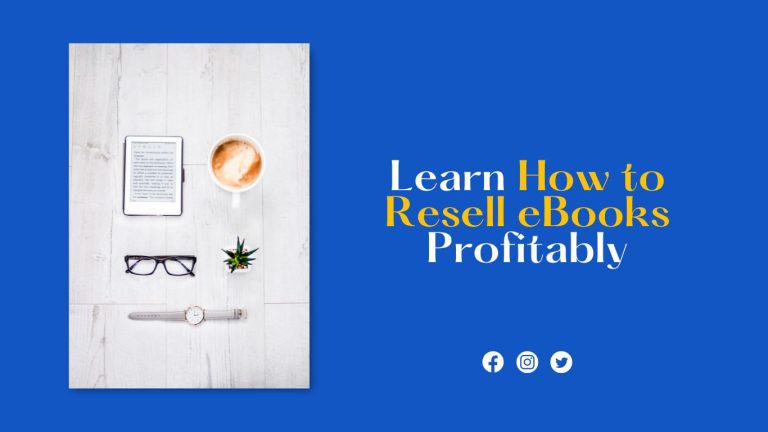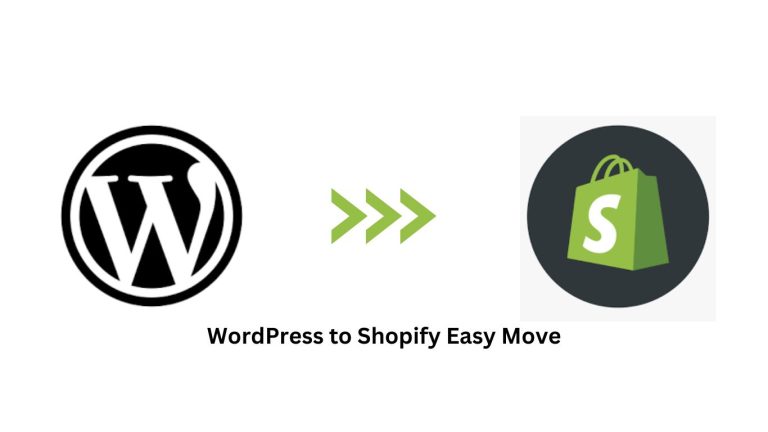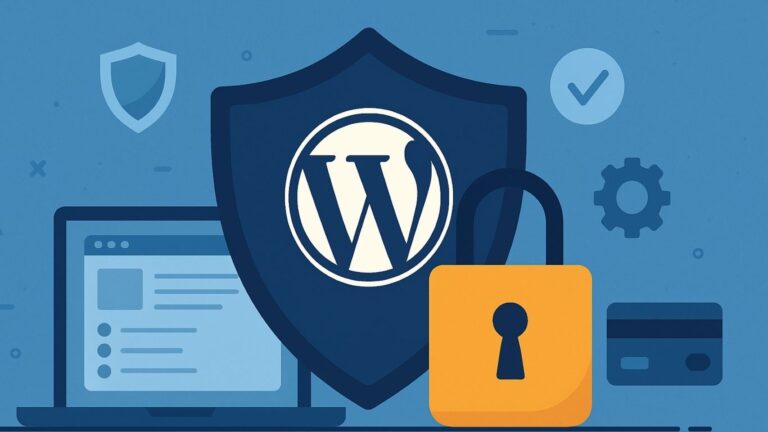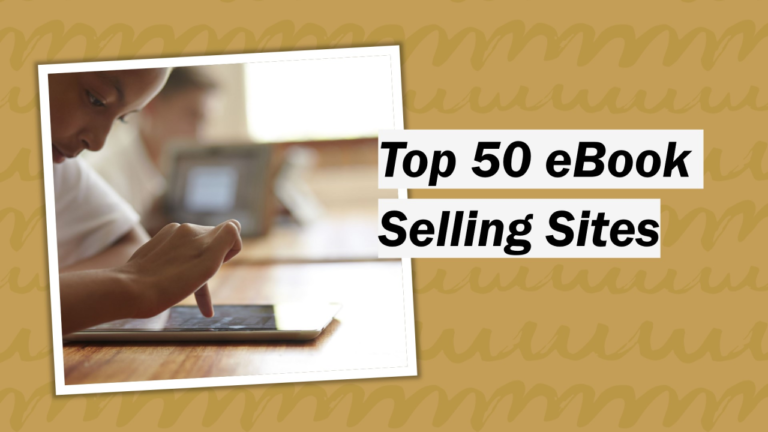How to Start KDP: Step by Step Guide to Launching Your Amazon eBook Business
Starting your Amazon KDP (Kindle Direct Publishing) business can be an incredibly rewarding venture, especially when you leverage free AI tools to minimize costs. This guide will take you through the entire process of starting your eBook business with zero investment. We will cover niche selection, marketing strategies, and the necessary tools. Starting KDP might seem challenging, but it’s entirely achievable with the right approach and tools. Let’s dive into this comprehensive guide.
| Heading | Subheadings |
|---|---|
| 1. Introduction | What is KDP?, Why Choose KDP? |
| 2. Research and Planning | Identifying Your Niche, Defining Your Audience |
| 3. Identifying Your Niche | Passion and Expertise, Market Demand |
| 4. Defining Your Audience | Demographics, Needs and Pain Points |
| 5. Content Creation | Outlining Your E-Book, Writing Your E-Book |
| 6. Outlining Your E-Book | Structure, Chapters and Subsections |
| 7. Writing Your E-Book | Drafting, Editing, Feedback |
| 8. Design and Formatting | Layout, Cover Design, Formatting |
| 9. Production and Publishing | Choosing a Platform, Pricing Strategy, Uploading Your E-Book |
| 10. Marketing and Promotion | Pre-Launch Marketing, Launch Strategy, Ongoing Marketing |
| 11. Pre-Launch Marketing | Build an Audience, Teasers and Previews |
| 12. Launch Strategy | Launch Date, Promotions |
| 13. Ongoing Marketing | SEO and Content Marketing, Social Media, Email Marketing, Paid Advertising |
| 14. Analyze and Optimize | Sales Tracking, Adjust Strategies |
| 15. Additional Monetization Strategies | Upselling and Cross-Selling, Affiliate Marketing |
1. Introduction
What is KDP?
KDP (Kindle Direct Publishing) is Amazon’s platform for self-publishing eBooks. It allows authors to publish their books and reach a global audience without upfront costs. Why choose KDP? Well, it’s an accessible and powerful way to get your content out there. Plus, it comes with the backing of Amazon’s vast ecosystem, providing incredible reach and potential earnings. Whether you’re a seasoned writer or a newbie, KDP offers the tools and platform to help you succeed.
Why Choose KDP?
Why should you consider how to start KDP? The reasons are plentiful. Firstly, KDP offers a user-friendly interface that makes the publishing process straightforward. Secondly, the potential for significant earnings is high, especially if you can create compelling content that resonates with readers. Lastly, KDP provides you with extensive reach, meaning your book can be found by millions of potential readers worldwide. So, let’s get started on this journey.
2. Research and Planning
Identifying Your Niche
Choosing the right niche is the cornerstone of your KDP success. You need to combine your passion with market demand to find a profitable niche. Start by brainstorming topics you are passionate about and knowledgeable in. Next, use tools like Google Trends and Ubersuggest to see what readers are currently interested in. This combination of passion and market research will help you find a niche that not only interests you but also has a ready audience.
Defining Your Audience
Understanding your target audience is crucial for creating content that resonates. Begin by identifying the demographics of your potential readers—age, gender, location, and interests. This will help you tailor your content to meet their specific needs. Additionally, use surveys to understand the pain points and challenges your audience faces. By addressing these issues in your eBook, you can provide real value and build a loyal readership.
3. Identifying Your Niche
Passion and Expertise
Selecting a topic you are passionate about is key. Not only will this make the writing process more enjoyable, but it will also ensure your content is engaging and authentic. Your enthusiasm will shine through, making your eBook more compelling to readers. Furthermore, writing about something you are knowledgeable in adds credibility to your work.
Market Demand
To ensure your eBook has a market, use tools like Google Trends and Ubersuggest to identify what readers are interested in. Google Trends can show you the popularity of search terms over time, while Ubersuggest can provide insights into keywords and competition. This research will help you choose a niche that has both passion and market demand, setting the foundation for your KDP success.
4. Defining Your Audience
Demographics
Determining the demographics of your target audience is essential. Are you writing for young adults, professionals, or retirees? Knowing the age, gender, location, and interests of your readers will help you tailor your content to their specific needs. This targeted approach increases the likelihood of your eBook resonating with your audience and driving sales.
Needs and Pain Points
Understanding the problems your potential readers face is crucial for creating valuable content. Use surveys and questionnaires to gather insights directly from your audience. Platforms like SurveyMonkey and Google Forms are great tools for this purpose. By addressing the needs and pain points of your readers, you can create an eBook that provides real solutions, making it more appealing and useful.
5. Content Creation
Outlining Your E-Book
A well-structured outline is the backbone of your eBook. Start by creating a detailed table of contents. This will serve as a roadmap for your writing process, ensuring you cover all necessary topics systematically. Break down each chapter into manageable sections to make the writing process less daunting and help maintain a logical flow of information.
Structure
Develop a structured table of contents that outlines the main points and subpoints of your eBook. This will keep your writing focused and organized, making it easier for readers to follow along. A clear structure also helps you stay on track during the writing process, ensuring you cover all necessary information.
Chapters and Subsections
Break down each chapter into smaller sections to improve readability. This approach makes it easier for readers to digest the information and keeps them engaged. Additionally, smaller sections can make the writing process feel more manageable, helping you stay motivated and productive.
Writing Your E-Book
Drafting
When drafting your eBook, focus on clarity and value. Use AI tools like ChatGPT to help generate ideas and write coherent paragraphs. This can help you overcome writer’s block and ensure your content is engaging and informative. Remember, the goal is to provide real value to your readers.
Editing
Once you’ve completed your draft, it’s time to polish your manuscript. Utilize tools like Grammarly and Hemingway Editor to check for grammar, style, and coherence. These tools can help you improve the readability and professionalism of your writing, making it more appealing to readers.
Feedback
Seeking feedback from beta readers is an essential step in the content creation process. Platforms like Reddit’s Beta Readers community can connect you with individuals willing to read your draft and provide constructive criticism. This feedback can help you identify areas for improvement and make necessary adjustments before publishing.
6. Outlining Your E-Book
Structure
Developing a structured table of contents is crucial for keeping your writing focused and organized. Start by outlining the main points and subpoints of your eBook. This will serve as a roadmap, ensuring you cover all necessary topics systematically and comprehensively.
Chapters and Subsections
Breaking down each chapter into smaller sections can significantly improve readability. Smaller sections make it easier for readers to digest the information and keep them engaged. Additionally, this approach can make the writing process feel more manageable, helping you stay motivated and productive.
7. Writing Your E-Book
Drafting
When drafting your eBook, focus on clarity and value. Use AI tools like ChatGPT to help generate ideas and write coherent paragraphs. This can help you overcome writer’s block and ensure your content is engaging and informative. Remember, the goal is to provide real value to your readers.
Editing
Once you’ve completed your draft, it’s time to polish your manuscript. Utilize tools like Grammarly and Hemingway Editor to check for grammar, style, and coherence. These tools can help you improve the readability and professionalism of your writing, making it more appealing to readers.
Feedback
Seeking feedback from beta readers is an essential step in the content creation process. Platforms like Reddit’s Beta Readers community can connect you with individuals willing to read your draft and provide constructive criticism. This feedback can help you identify areas for improvement and make necessary adjustments before publishing.
8. Design and Formatting
Layout
Ensuring your eBook has a professional and readable layout is crucial for making a good impression on readers. Canva is a great tool for designing both the interior and exterior of your eBook. It offers a variety of templates and design elements that can help you create a visually appealing layout.
Cover Design
Creating a compelling cover is essential for attracting potential readers. Use Canva to design an eye-catching cover that reflects the content and tone of your eBook. A professional-looking cover can significantly increase your book’s appeal and sales potential.
Formatting
Formatting your eBook for different platforms is an important step in the publishing process. Use free tools like Reedsy Book Editor or Calibre to format your eBook for Kindle, ePub, and PDF. Proper formatting ensures your eBook looks good on any device, enhancing the reading experience for your audience.
9. Production and Publishing
Choosing a Platform
Amazon Kindle Direct Publishing (KDP) is the most popular platform for self-publishing eBooks, offering a large audience and extensive reach. However, consider expanding to other platforms like Apple Books, Google Play Books, and Kobo to reach a wider audience.
Pricing Strategy
Research competitor pricing on Amazon to get an idea of what similar eBooks are selling for. Price your eBook according to its perceived value and your target audience’s willingness to pay. A competitive pricing strategy can help you attract more readers and increase sales.
Uploading Your E-Book
When uploading your eBook to KDP, include catchy metadata such as a compelling title, subtitle, and relevant keywords. This improves discoverability and makes your eBook more appealing to potential readers. Additionally, select appropriate categories to increase your eBook’s visibility on Amazon.
10. Marketing and Promotion
Pre-Launch Marketing
Building an audience before your eBook launches is crucial for generating interest and driving sales. Use social media, blogs, and email lists to gather followers and create anticipation. Engage with your audience regularly to keep them excited about your upcoming eBook.
Build an Audience
Social media platforms like Facebook, Instagram, and Twitter are excellent tools for building an audience. Share valuable content related to your eBook and engage with your followers to build a loyal community. Additionally, start a blog to provide in-depth information and updates about your eBook.
Teasers and Previews
Sharing snippets and previews of your eBook can generate excitement and interest among potential readers. Post excerpts on your blog, social media, and email newsletters to give your audience a taste of what’s to come. This can help build anticipation and encourage pre-orders.
Launch Strategy
Choosing a strategic launch date is important for maximizing your eBook’s visibility and sales. Consider factors like holidays, competitor launches, and your audience’s availability when selecting a launch date. Additionally, offer promotional discounts or bonuses to encourage early purchases.
Launch Date
Selecting the right launch date can significantly impact your eBook’s success. Avoid launching during major holidays or events that might distract your audience. Instead, choose a date when your target audience is likely to be available and interested in new content.
Promotions
Offering discounts or bonuses for early buyers can create a sense of urgency and encourage more people to purchase your eBook. Consider running limited-time promotions, such as discounted prices or exclusive bonus content, to incentivize early purchases.
Ongoing Marketing
Marketing doesn’t stop after your eBook is launched. Continue promoting your eBook through SEO, content marketing, social media, email campaigns, and paid advertising to maintain momentum and drive ongoing sales.
SEO and Content Marketing
Writing optimized blog posts and using SEO tools like Yoast can help increase your eBook’s visibility on search engines. Create valuable content related to your eBook’s topic and optimize it for relevant keywords to attract organic traffic.
Social Media
Regularly engage with your audience on social media platforms to keep them interested and informed about your eBook. Share updates, behind-the-scenes content, and engaging posts to maintain a strong online presence.
Email Marketing
Building and nurturing an email list is a powerful way to drive ongoing sales. Use tools like Mailchimp to manage your email campaigns and send value-driven content and promotions to your subscribers.
Paid Advertising
Consider using paid advertising to boost your eBook’s visibility and reach a larger audience. Platforms like Facebook Ads, Google Ads, and Amazon Ads can help you target specific demographics and drive more sales.
11. Pre-Launch Marketing
Build an Audience
Building an audience before your eBook launches is crucial for generating interest and driving sales. Use social media, blogs, and email lists to gather followers and create anticipation. Engage with your audience regularly to keep them excited about your upcoming eBook.
Teasers and Previews
Sharing snippets and previews of your eBook can generate excitement and interest among potential readers. Post excerpts on your blog, social media, and email newsletters to give your audience a taste of what’s to come. This can help build anticipation and encourage pre-orders.
12. Launch Strategy
Launch Date
Selecting the right launch date can significantly impact your eBook’s success. Avoid launching during major holidays or events that might distract your audience. Instead, choose a date when your target audience is likely to be available and interested in new content.
Promotions
Offering discounts or bonuses for early buyers can create a sense of urgency and encourage more people to purchase your eBook. Consider running limited-time promotions, such as discounted prices or exclusive bonus content, to incentivize early purchases.
13. Ongoing Marketing
SEO and Content Marketing
Writing optimized blog posts and using SEO tools like Yoast can help increase your eBook’s visibility on search engines. Create valuable content related to your eBook’s topic and optimize it for relevant keywords to attract organic traffic.
Social Media
Regularly engage with your audience on social media platforms to keep them interested and informed about your eBook. Share updates, behind-the-scenes content, and engaging posts to maintain a strong online presence.
Email Marketing
Building and nurturing an email list is a powerful way to drive ongoing sales. Use tools like Mailchimp to manage your email campaigns and send value-driven content and promotions to your subscribers.
Paid Advertising
Consider using paid advertising to boost your eBook’s visibility and reach a larger audience. Platforms like Facebook Ads, Google Ads, and Amazon Ads can help you target specific demographics and drive more sales.
14. Analyze and Optimize
Sales Tracking
Monitoring your sales is essential for understanding your eBook’s performance. Use Amazon KDP Reports to track sales and identify trends. This data can help you make informed decisions about your marketing and pricing strategies.
Adjust Strategies
Based on your sales data and customer feedback, make necessary adjustments to your content and marketing tactics. This iterative approach ensures you continually improve your eBook and marketing efforts, maximizing your chances of success.
15. Additional Monetization Strategies
Upselling and Cross-Selling
Offering additional related products or services can increase your revenue. Consider creating companion eBooks, online courses, or consulting services that complement your main eBook. Bundling these products can provide added value to your customers and boost your earnings.
Affiliate Marketing
Including affiliate links within your eBook can generate extra income. Partner with relevant companies and promote their products or services in your eBook. Each time a reader makes a purchase through your affiliate link, you earn a commission.
Conclusion
In conclusion, starting your Amazon KDP business doesn’t have to be a costly endeavor. By leveraging free AI tools and following this step-by-step guide, you can create, publish, and market your eBook with zero investment. From identifying your niche to ongoing marketing, every step is crucial for your success. So, why wait? Start your KDP journey today and turn your passion into a profitable business.
Summary of Blog Post
- Introduction to KDP: Understand what Kindle Direct Publishing (KDP) is and why it’s a beneficial platform for self-publishing eBooks.
- Choosing a Niche: Combine your passion and market demand using tools like Google Trends and Ubersuggest to find a profitable niche.
- Defining Your Audience: Identify the demographics and pain points of your target readers to tailor your content effectively.
- Outlining Your E-Book: Create a structured table of contents and break down chapters into manageable sections for better readability.
- Writing Your E-Book: Draft with clarity and value, use AI tools like ChatGPT, and polish your manuscript with Grammarly and Hemingway Editor.
- Design and Formatting: Use Canva for a professional layout and cover design, and tools like Reedsy Book Editor or Calibre for formatting.
- Publishing on KDP: Choose the right platform, set a competitive pricing strategy, and optimize metadata for discoverability.
- Pre-Launch Marketing: Build an audience using social media, blogs, and email lists, and share teasers to generate interest.
- Launch Strategy: Select a strategic launch date and offer promotions to encourage early purchases.
- Ongoing Marketing: Utilize SEO, social media engagement, email marketing, and paid advertising to maintain sales momentum.
- Analyzing and Optimizing: Track sales using Amazon KDP Reports, gather feedback, and adjust strategies accordingly.
- Additional Monetization: Increase revenue through upselling, cross-selling, and affiliate marketing within your eBook.
- Conclusion: Start your KDP journey with zero investment using free AI tools and a structured approach to create, publish, and market your eBook.
Social Media Blurb
🚀 Ready to launch your eBook business with Amazon KDP? Learn how to start KDP step by step, from niche selection to marketing strategies, all with zero investment! 🌟 Check out our comprehensive guide and start your journey to success today! 📚💰 #KDP #SelfPublishing #eBookBusiness
FAQs
Q1: What is Amazon KDP, and how does it work?
Amazon Kindle Direct Publishing (KDP) is a platform that allows authors to self-publish eBooks and paperbacks for free. You can upload your manuscript, design your cover, and publish your book to millions of readers worldwide. KDP offers tools to track sales, run promotions, and earn royalties of up to 70% on eBook sales. The process is straightforward: create an account, upload your content, set your pricing, and hit publish. Your book becomes available on Amazon within 24 to 48 hours. The platform provides global reach, making it easier for authors to connect with readers across different markets.
Q2: How do I choose the right niche for my eBook?
Choosing the right niche involves a combination of your passion, expertise, and market demand. Start by identifying topics you are passionate about and knowledgeable in. Then, use tools like Google Trends, Amazon Best Sellers, and Ubersuggest to gauge market demand. Look for niches with high search volumes but low competition. This balance ensures that your eBook stands out and reaches a ready audience. Additionally, consider the long-term potential of the niche – some topics may be trending now but could lose popularity quickly.
Q3: What are the key steps to outline an eBook effectively?
Outlining an eBook starts with creating a detailed table of contents. Begin by listing the main sections or chapters of your book. Break these down into sub-sections to ensure a logical flow of information. Each chapter should focus on a specific aspect of your topic, providing value and insights. Using mind-mapping tools or templates can help structure your outline. This process not only makes writing easier but also ensures you cover all relevant points comprehensively. Remember to keep your audience’s needs in mind when outlining to make the content engaging and useful.
Q4: How can AI tools assist in writing and editing my eBook?
AI tools like ChatGPT, Grammarly, and Hemingway Editor can significantly enhance your writing process. ChatGPT can help generate content ideas and assist with drafting sections of your eBook. Grammarly offers advanced grammar and style checks, ensuring your writing is clear and error-free. Hemingway Editor helps simplify complex sentences, making your content more readable. These tools save time and improve the quality of your writing. Additionally, they provide suggestions to enhance readability and engagement, crucial for keeping your audience interested.
Q5: What are some best practices for designing an eBook cover?
Your eBook cover is the first thing potential readers will see, so it needs to be compelling. Use tools like Canva to create professional-looking designs. Focus on simplicity and clarity – the title and author name should be easy to read, even in thumbnail size. Choose colors and fonts that reflect the genre and tone of your book. High-quality images and graphics can make your cover stand out. If you’re not confident in your design skills, consider hiring a professional designer. A great cover can significantly impact your eBook’s appeal and sales.
Q6: How do I format my eBook for different platforms?
Formatting your eBook correctly is essential for ensuring it displays well on all devices. Tools like Reedsy Book Editor and Calibre can help with this. Follow the specific formatting guidelines provided by each platform. For Amazon KDP, ensure your manuscript is in a supported file format like DOCX or EPUB. Use standard fonts and keep the layout simple to avoid issues with different eReaders. Test your eBook on multiple devices to ensure it looks good everywhere. Proper formatting enhances the reading experience, making your book more professional and enjoyable.
Q7: What are the benefits of pre-launch marketing for an eBook?
Pre-launch marketing helps build anticipation and excitement for your eBook. By engaging with your audience through social media, blogs, and email lists, you can create a buzz before your book is even available. Share teasers, previews, and behind-the-scenes content to generate interest. This strategy can lead to higher initial sales and reviews, which are crucial for your book’s visibility on platforms like Amazon. Additionally, a strong pre-launch campaign can help you identify potential issues and gather valuable feedback to improve your eBook before its official release.
Q8: How do I price my eBook competitively?
Setting the right price for your eBook involves researching competitor prices and understanding your target audience’s willingness to pay. Look at similar books in your genre and see what prices they are listed at. Consider offering introductory discounts or promotional pricing to attract early buyers. Amazon KDP allows you to change your pricing at any time, so you can experiment to find the optimal price point. Remember, pricing your eBook too low might undermine its perceived value, while pricing it too high could deter potential readers.
Q9: What strategies can I use for ongoing marketing after my eBook launch?
Ongoing marketing is vital for sustained eBook sales. Utilize SEO and content marketing by writing blog posts related to your eBook’s topic and optimizing them for relevant keywords. Engage regularly on social media, sharing updates and engaging with your audience. Build and nurture an email list to send value-driven content and promotions. Consider paid advertising options like Facebook Ads, Google Ads, and Amazon Ads to reach a broader audience. Consistent marketing efforts help maintain momentum and drive continuous sales.
Q10: How can I track my eBook’s sales performance?
Monitoring your eBook’s sales performance is crucial for making informed decisions. Use Amazon KDP Reports to track your sales and identify trends. Pay attention to which marketing strategies are driving the most sales. Collect and analyze customer feedback and reviews to understand what readers like and what they don’t. This data can help you refine your marketing tactics and improve your content. Regularly reviewing your sales performance ensures you stay on top of your eBook’s progress and make necessary adjustments.
Q11: What additional monetization strategies can I use for my eBook?
Beyond direct sales, consider upselling and cross-selling related products or services. For example, create companion eBooks, online courses, or consulting services that complement your main eBook. Bundling these products can provide added value to your customers. Incorporate affiliate marketing by including relevant affiliate links within your eBook. Partner with companies whose products or services align with your content. Each time a reader makes a purchase through your affiliate link, you earn a commission, providing an additional income stream.
Q12: How do I handle customer feedback and reviews?
Customer feedback and reviews are valuable for improving your eBook and marketing strategies. Respond to reviews professionally, thanking readers for their feedback. Use constructive criticism to make necessary improvements to your content. Positive reviews can be highlighted in your marketing materials to build credibility. Encourage satisfied readers to leave reviews by including a polite request at the end of your eBook. Regularly monitoring feedback helps you stay connected with your audience and continuously improve your offerings.
Q13: How can I use email marketing to boost eBook sales?
Email marketing is a powerful tool for driving eBook sales. Build an email list by offering a free resource or a discount on your eBook in exchange for email subscriptions. Use platforms like Mailchimp to manage your campaigns. Send regular newsletters with value-driven content, updates about your eBook, and promotional offers. Personalize your emails to make your subscribers feel valued. By nurturing your email list, you can create a loyal audience that is more likely to purchase your eBook and recommend it to others.
Q14: How do I engage with my audience on social media?
Engaging with your audience on social media helps build a loyal following. Post regularly on platforms like Facebook, Twitter, Instagram, and LinkedIn. Share updates about your eBook, behind-the-scenes content, and interesting tidbits related to your topic. Respond to comments and messages promptly to show that you value your audience’s input. Run contests, polls, and Q&A sessions to increase engagement. Consistent interaction keeps your audience interested and invested in your eBook, leading to higher sales and better word-of-mouth promotion.
Q15: What are the best practices for writing an engaging eBook?
Writing an engaging eBook involves a few key practices. Start with a strong outline to ensure your content is well-organized. Use a conversational writing style to make your content more relatable and enjoyable. Keep your paragraphs short and focused to maintain reader interest. Use real-life examples, anecdotes, and analogies to illustrate your points. Incorporate visuals like images, charts, and infographics to break up text and add value. Finally, edit and proofread thoroughly to ensure your writing is clear, concise, and error-free.
Related Blog Introduction
Looking for more tips and insights on self-publishing and digital marketing? Check out our comprehensive blog at Get Rizwan’s Blog. We cover everything from writing and editing tips to advanced marketing strategies to help you succeed in your eBook publishing journey. Dive into our latest articles and transform your self-publishing efforts today!
Enhance User Engagement
Explore our range of services designed to help you succeed in your self-publishing journey. Visit our Services Page to learn more about how we can assist you. Also, take a look at our Portfolio Page to see examples of our successful projects and get inspired.
LinkedIn Profile Promotion
Connect with Rizwan on LinkedIn for more insights and professional advice on self-publishing and digital marketing. Follow Rizwan on LinkedIn to stay updated with the latest trends and tips in the industry. Let’s connect and grow together!
Recommended Reading for In-Depth Knowledge
Expand your understanding and further your knowledge with these carefully selected resources:
- Amazon KDP Help Center: Access the official Amazon KDP Help Center for comprehensive guides, tutorials, and FAQs on publishing and marketing your eBook.
- Reedsy Blog: Explore Reedsy’s blog for insightful articles on writing, self-publishing, and book marketing, written by industry experts.
- Canva Design School: Dive into Canva’s Design School for tutorials and tips on creating eye-catching eBook covers and interior designs.
- Grammarly Blog: Improve your writing skills with Grammarly’s blog, featuring articles on grammar, style, and effective communication.
- Mailchimp Resources: Discover valuable resources, guides, and case studies on email marketing strategies and best practices from Mailchimp.
- Ubersuggest Blog: Explore Neil Patel’s blog for insights into SEO, content marketing, and digital marketing strategies to enhance your eBook’s visibility.
- Canva: Create stunning visuals for your eBook marketing campaigns with Canva’s user-friendly design platform.
- Mailchimp: Grow your email list and automate your email marketing campaigns with Mailchimp’s powerful tools and features.
- Google Trends: Stay informed about trending topics and search queries related to your eBook’s niche using Google Trends.
- Hemingway Editor: Simplify your writing and improve readability with the Hemingway Editor’s online tool for analyzing and refining your text.
Explore these resources to gain deeper insights and optimize your eBook publishing journey.
All the Above in a Brief: A Road to Create 100K per month
Starting a successful Amazon KDP (Kindle Direct Publishing) business with zero investment is entirely possible with the help of free AI tools and strategic planning. Below, I’ll outline all the necessary steps, strategies, tips, and tricks to achieve this goal, along with the URLs of free AI tools that can assist you in this journey.
1. Research and Planning
a. Identify Your Niche
Passion and Expertise: Choose a topic you are passionate about and knowledgeable in.
Market Demand: Use these tools to identify what readers are interested in:
- Google Trends: Google Trends
- Amazon Best Sellers: Amazon Best Sellers
- Keyword Research Tools: Use free keyword research tools like:
- Ubersuggest: Ubersuggest
- Answer the Public: Answer the Public
b. Define Your Audience
Demographics: Determine age, gender, location, and interests of your target audience.
Needs and Pain Points: Understand the problems your audience is facing that your e-book can solve. Use tools like:
- SurveyMonkey (free plan): SurveyMonkey
- Google Forms: Google Forms
2. Content Creation
a. Outline Your E-Book
Structure: Create a detailed table of contents.
Chapters and Subsections: Break down each chapter into manageable sections.
b. Writing the E-Book
Drafting: Write the content focusing on clarity and value. Use AI writing tools like:
- ChatGPT (Free Plan): ChatGPT
Editing: Revise for grammar, style, and coherence. Utilize tools like:
- Grammarly (Free Plan): Grammarly
- Hemingway Editor: Hemingway Editor
Feedback: Get feedback from beta readers and make necessary improvements. Use platforms like:
- Reddit (beta readers community): Reddit Beta Readers
c. Design and Formatting
Layout: Ensure a professional and readable layout. Use tools like:
- Canva (Free Plan): Canva
Cover Design: Create a compelling cover. You can design it yourself using:
- Canva (Free Plan): Canva
Formatting: Format for different e-book platforms. Use free formatting tools like:
- Reedsy Book Editor: Reedsy Book Editor
- Calibre: Calibre
3. Production and Publishing
a. Choosing a Platform
Amazon Kindle Direct Publishing (KDP): KDP
Other Platforms: Consider expanding later to Apple Books, Google Play Books, and Kobo.
b. Pricing Strategy
Research: Look at competitor pricing using Amazon’s search.
Value Perception: Price according to the perceived value and your target audience.
c. Uploading Your E-Book
Metadata: Include a catchy title, subtitle, and relevant keywords.
Categories: Select appropriate categories to improve discoverability.
4. Marketing and Promotion
a. Pre-Launch Marketing
Build an Audience: Use social media, blogs, and email lists. Free tools include:
Teasers and Previews: Share snippets to generate interest.
b. Launch Strategy
Launch Date: Choose a strategic date.
Promotions: Offer discounts or bonuses for early buyers. Use Amazon’s promotional tools.
c. Ongoing Marketing
SEO and Content Marketing: Write blog posts, guest posts, and optimize for search engines. Tools include:
- Yoast SEO (for WordPress): Yoast SEO
- Google Analytics: Google Analytics
Social Media: Regular updates and engaging with your audience.
Email Marketing: Build and nurture an email list with value-driven content and promotions.
Paid Advertising: Once you have some revenue, consider reinvesting in:
- Facebook Ads: Facebook Ads
- Google Ads: Google Ads
- Amazon Ads: Amazon Ads
5. Analyze and Optimize
a. Sales Tracking
Analytics: Monitor sales and downloads using:
- Amazon KDP Reports: KDP Reports
Customer Feedback: Collect and analyze reviews and feedback.
b. Adjust Strategies
Content Updates: Revise and update the e-book based on feedback.
Marketing Tactics: Adjust marketing strategies based on performance data.
6. Additional Monetization Strategies
a. Upselling and Cross-Selling
Related Products: Offer additional e-books, courses, or services.
Bundles: Create bundles with other related products.
b. Affiliate Marketing
Affiliate Links: Include affiliate links within your e-book for additional income. Join affiliate programs like:
- Amazon Associates: Amazon Associates
Final Tips and Tricks
- Consistency: Be consistent in your writing, publishing, and marketing efforts.
- Quality: Always prioritize quality over quantity.
- Engagement: Engage with your audience through comments, emails, and social media.
- Learning: Continuously learn from other successful authors and marketers.
By leveraging these free AI tools and following the outlined strategies, you can build a successful Amazon KDP business with zero initial investment and work towards earning $100K per month.







